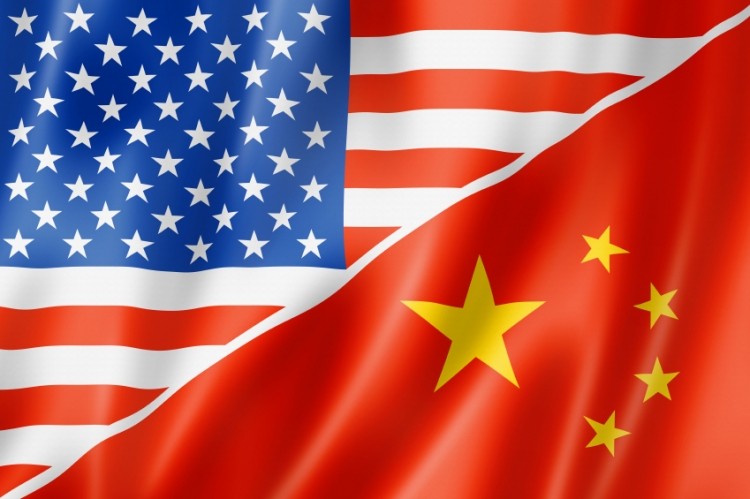Tariff tiff: Fears for US sorghum and soy exports to China

US President Trump announced the proposed tariffs yesterday (March 22).
The plan to slap levies on Chinese products follows the publication of the outcomes of a probe carried out by the US Trade Representative (USTR) into China’s actions, policies and practices as they relate to intellectual property, innovation and technology transfer.
Some $50bn worth of imported products could be hit.
The products set to face such additional tariffs will be revealed in the next 15 days. A list will be published in the Federal Register and left open for public comment, after which a final product list will be established, said the USTR.
The USTR said it may initiate other actions arising out of the findings of its investigation – it may bring a case to the World Trade Organization (WTO) over China’s technology licensing practices and reported investment restrictions regarding sensitive technologies.
The tarrifs announced this week are in addition to the metals duties ordered earlier this month on China and other countries, which had already prompted fears of retaliatory measures from US trading partners in terms of US feed grain exports.
Chinese Ministry of Commerce officials reportedly said Thursday that the country would respond if the US does impose additional restrictions. The US feed grain industry is anxious as China is a major importer of several feed grains including soybeans and sorghum.
The American Soybean Association (ASA) said on Thursday that retaliation by China could mean job losses for soybean producers.
“Multiple reports indicate the Chinese have US soybeans squarely in their sights for retaliation, and this decision places soybean farmers across the country in financial danger,” said John Heisdorffer, ASA president. “Farm incomes are down nearly 50% from 2013.”
“There is a real struggle in agriculture to keep everything going right now,” he added. “It’s extremely frustrating to have the administration taking aim at our largest trading partner.”
'If demand drops and prices collapse, soybean farmers will go out of business'
The US exported about $14.2bn worth of soybeans to China in 2016 or about 35.8m metric tons, though it has seen a decrease in tonnage sold in Q1 of this marketing year, according to the USDA.
That export market is now in jeopardy, said Heisdorffer.
“If there was any question about the likelihood of retaliation by China after previous actions by the administration to protect domestic manufacturers, that doubt was erased today.
“American soybean producers oppose this decision by the administration that puts exports of our soybeans to China in jeopardy.
Agriculture could provide a way to reduce the US trade imbalance and grow the import market to China. However the country needs to take steps to expand the market, he added.
“Agriculture is not like other industries that can sustain extreme volatility in markets and prices,” he said. “If demand drops and prices collapse, soybean farmers will go out of business – not in 5 or 10 years, but this year and next.”
“Trade is an existential issue for soybean farmers,” he said. “We export over half of our crop. China is the largest driver of world demand for soybeans. The tough line the administration is taking on China will lead to retaliation that will cost many farmers their livelihoods.”
Sorghum story
Additionally, the National Sorghum Producers have been engaged with an ongoing anti-dumping, countervailing duty investigation brought by China since February and are continuing to monitor the trade relationship, the organization told us.
“Our sorghum growers are already facing a difficult retaliatory type situation as a small part of a much larger picture with the AD/CVD investigations into imports of US sorghum launched by China in February, and National Sorghum Producers and our industry stakeholders remain actively engaged in these cases,” the association said. “There is undoubtedly a lot of uncertainty related to trade with China in this current environment, and we continue to monitor the issue and provide information to our growers as it becomes available.”
The US Grains Council (USGC) added that it was “dismayed” at the new tariffs announced.
“While we are not surprised, we are dismayed at new tariffs announced today by the Trump Administration against China, which will almost certainly prompt immediate and painful retaliation against US agriculture and which have already complicated our global efforts to promote sales of US grains and grain products,” said Tom Sleight, USGC president and CEO in a statement provided to us.
“The farmers and exporters we represent have been here before in our relationship with China.”
Since 2010, China has taken steps restricting the import of some feed grains and agriculture products from the US including dried distillers grains (DDGS), ethanol and corn, he said.
The council has supported efforts to address those topics, while maintaining an export market to China.
“In the near term, we will continue our work to diversify the markets to which our products are exported, focused on sales that can support prices this crop year,” he said. “Based on our recent experience, we are well aware this work will be an uphill battle because our reputation as a reliable supplier has come into question.”
The USGC also plans to continue discussion with the US Department of Agriculture and the USTR to talk about the need for open markets, he said.
“In the longer term, US agriculture must have a stable and coherent trade policy to thrive,” said Sleight. “The world is watching what our country does next – and markets have long memories. Agriculture is a positive contributor to the balance of trade, and the international marketplace offers the best available opportunity for growth in the US agriculture sector and the US economy as a whole.”












